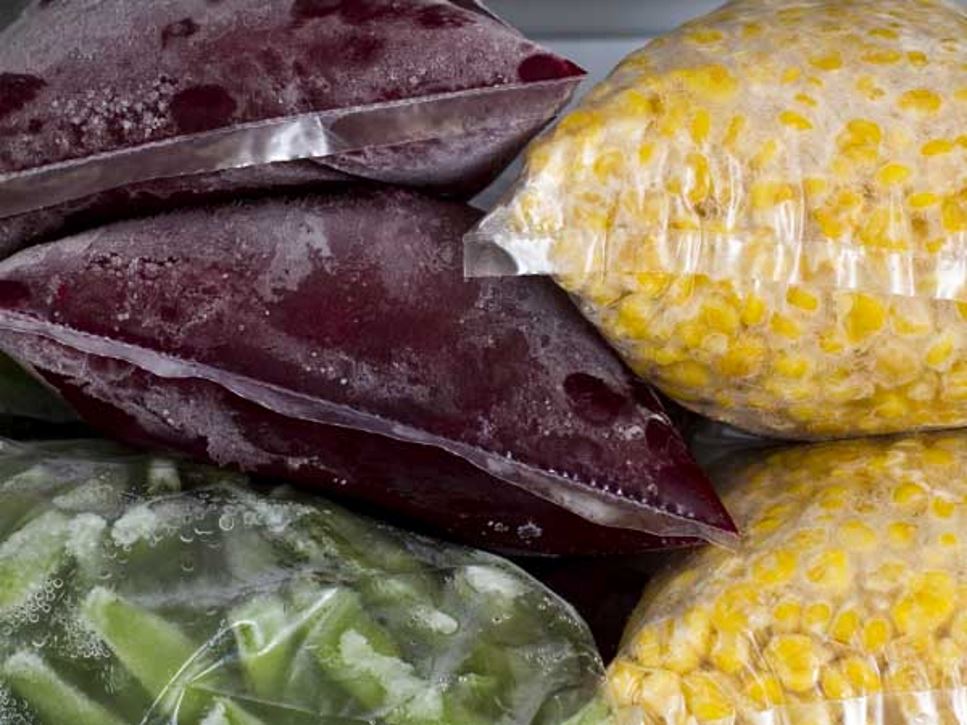Freezing is an effective way to make perishable items last longer. The process of freezing prevents the growth of bacteria, yeasts and molds that cause food spoilage and food poisoning. However, freezing does not destroy them, so it is important to follow these tips to safely freeze and protect the quality of your foods.
Proper Storage, Temperature and Time
Keep your freezer at or below 0°F to keep your food safe. Only the quality may suffer with lengthy freezer storage. Built-in temperature control dials may not be accurate, so use a separate appliance thermometer to check the internal freezer temperature. These thermometers are available in grocery, hardware and kitchen specialty stores. Because the process of freezing keeps food safe almost indefinitely, recommended storage times are meant for quality control.
What Can You Freeze?
You can freeze almost any food with some exceptions, including unopened canned foods or eggs in shells. You can safely freeze items such as mayonnaise, cream sauce and lettuce, but the quality will suffer. Meat, poultry, seafood and other vegetables are great foods to freeze because they are perishable, so freezing helps to maintain their safety and quality.
Packaging for the Freezer
Food items should be tightly packed in freezer bags or airtight containers. Squeeze air from bags before sealing and leave some space in containers in case foods expand. If moisture escapes, frozen food can become dry, tough and may develop "freezer burn."
To prevent moisture loss, use packaging designed for freezing including:
- "Can or freeze" glass jars
- Plastic freezing containers
- Heavyweight aluminum foil
- Plastic-coated freezer paper
- Polyethylene wrap and bags
- Freezer-safe bags
Do not use cardboard cartons or reuse plastic containers from cottage cheese, ice cream, whipped topping or other foods as these containers were not designed to safely freeze foods. And remember to always label and date foods before placing in the freezer.
Preventing Freezer Burn
"Freezer burn" refers to the white, dried-out patches that appear on the surface of frozen foods. Although freezer burn won't make you sick, it makes frozen foods — such as meat and produce — tough and tasteless. Foods with freezer burn can still be eaten — simply cut away the sections of freezer burn before or after cooking.
Here are some tips on how to prevent freezer burn:
- Before freezing, wrap items in heavy freezer paper, plastic wrap, freezer bags or foil.
- Date all freezer packages and use the oldest food first.
- Make older items easier to access by placing them in the front of the freezer.
References
Find a Nutrition Expert
Looking for credible nutrition information and recommendations? The Academy of Nutrition and Dietetics' network of credentialed food and nutrition practitioners are ready to help!

